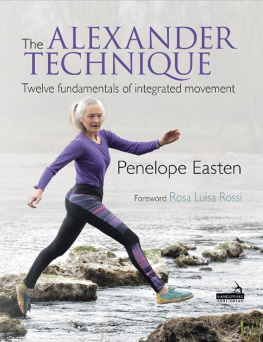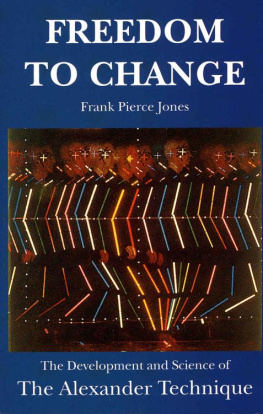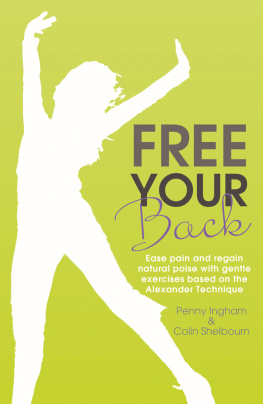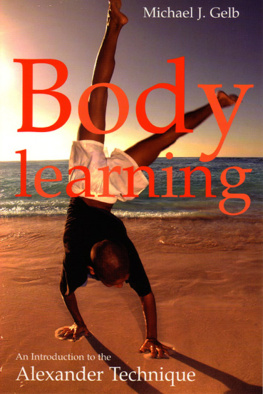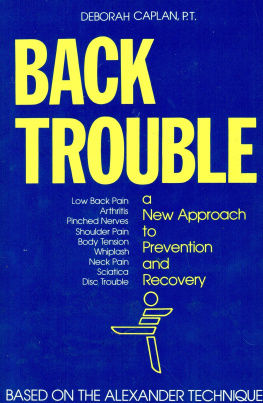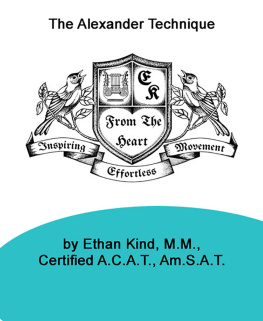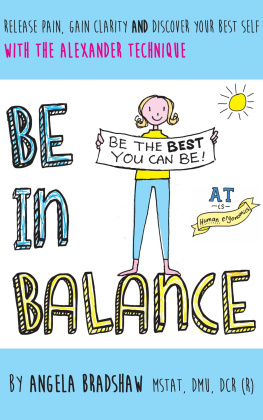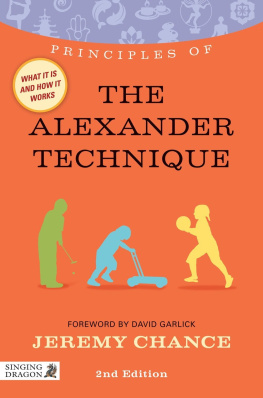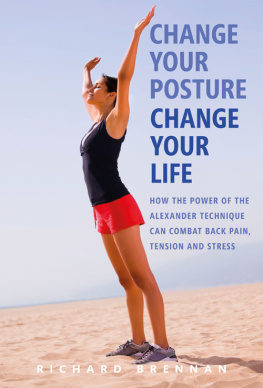
First edition first published in 2008 by D&B Publishing
Second edition first published in 2014 by D & B Publishing
Copyright 2014 Carolyn Nicholls, 2008 Carolyn Nicholls
The right of Carolyn Nicholls to be identified as the author of this work has been asserted in accordance with the Copyrights, Designs and Patents Act 1988.
All rights reserved. No part of this publication may be reproduced, stored in a retrieval system or transmitted in any form or by any means, electronic, electrostatic, magnetic tape, photocopying, recording or otherwise, without prior permission of the publisher.
British Library Cataloguing-in-Publication Data
A catalogue record for this book is available from the British Library.
ISBN: 978 1 909457 27 0
All sales enquiries should be directed to D & B Publishing:
e-mail:
Website: www.dandbpublishing.com
Cover design by Horacio Monteverde
Text design by SCW Design
Production by Posthouse Publishing
Printed and bound in Estonia
PRAISE FOR BODY, BREATH AND BEING
Weve all been waiting for a good new book introducing the principles and practice of the Alexander Technique. Carolyn Nicholls has given us a great new book on the subject. Highly recommended for beginners of all levels.
Malcolm Balk
Author: Master the Art of Running
A fantastic book, great pictures, a very informative practical book. This goes on our reading list for BA and MA students.
Chris Palmer,
Head of Voice and Speech
GSA School of Acting and Musical Theatre
Carolyn Nicholls book is much more than a beginners introduction to the Alexander Technique. Teachers of the Technique will also find this book a useful manual for honing their communication skills and expanding their repertoire of handy hints and ideas. Carolyns expertise as a teacher shows through in her case studies and examples. Using personable, jargon-free language that is easy to follow, she progressively explains the concepts of the Alexander Technique and their value in our busy world. Her book is a pleasure to read.
Dr Terry Fitzgerald
Head of Training
Sydney Alexander School, Australia
Dedication
To my wonderful children Alison and Christopher
Acknowledgements
The stories in this book are real stories of real people, who have been generous enough to allow me to use their real names (except for Ellen and Jane, who are real people but prefer to be known just as Ellen and Jane). I would like to thank them all.
Matthew Andrews, who also took many of the photos in the book, Kevin Barber, Sinad Gillespie, Astrid Holm, Mindy MacArthur, Padmini Menon, Alison Nicholls, who also did the voice recordings, Mark Nelson, Guy Richardson, Anna Thorell, and Jeanie Wood.
Alexander teachers who are also expert in other fields have allowed me to pick their brains for the chapter on movement. They are, Malcolm Balk, who advised on running, Ulla Pedersen, swimming and Richard and Sally Weis, horse riding.
Thanks too to students and teachers at The Alexander Technique College (Brighton UK) who happily participated in all sorts of experiments for the book. They are Daniel Goddard, Sherry Loh, Paul Marsh, Jenny Aldridge, Natalia Danielczyn, Emily Heath, Padmini Menon and Diana Miller.
For support, suggestions, encouragement and advice on many aspects of the book I would like to thank Alexander colleagues: Malcolm Balk, Ron Colyer, Astrid Holm, Philip Tucker, and Jeanie Wood.
Tuba courtesy of Rosehill Instruments Ltd., Beaconsfield, Bucks.
Quotations from F. M. Alexanders Aphorisms courtesy of Mouritz Ltd. Copyright The Estate of F. M. Alexander 2008.
Photo Credits
| Matthew Andrews | Author photo, Alison Nicholls and many others |
| Carolyn Nicholls | Mark Nelson, Guy Richardson, Anna Thorell, Malcolm Balk Running workshop |
| George Weis | Richard Weis on Ming |
| Astrid Holm | Two year old boy in wood, two year old girl in chair |
| Collins and Brown | Malcolm Balk in lunge |
Sound credits
Scripts by: Carolyn Nicholls
Read by: Alison Nicholls
Recorded by: Patrick Bartlett
To listen to the free audio tracks referred to within the book, please download from www.dandbpublishing.com
Contents
Foreword
by Ron Colyer B(mus) MSTAT
Head of Training: Alexander ReEducation Centre, Berkshire UK
In January 1979 Carolyn Nicholls and I met for the first time as we hung up our coats at the Constructive Teaching Centre in Holland Park, London. This was where we were to embark on the training which would prepare us to teach the work of F.M. Alexander. Each of us had been taking regular lessons in the Technique for some time, and were now to enjoy the privilege of three years intensive work with Walter and Dilys Carrington.
Walter Carrington had been Alexanders assistant, and continued the work of training teachers after Alexanders death in 1955 until he himself passed away in August 2005. He was widely respected for his wisdom, and for his unique way of communicating the meaning of Alexanders discoveries in a simple and direct way. Dilys Carrington had developed her own thorough and precise method for teaching the unique hands-on skills which an Alexander teacher needs. Without their example and inspiration neither this book, nor its preface, would have been written.
Now, 29 years later, Carolyn and I each direct a teacher training course and meet regularly to run workshops for postgraduate Alexander teachers. With deep admiration I have watched Carolyn develop her own entirely personal way of talking and writing about the Technique, through constant practice, enquiry and reflection.
Writing about the Technique presents two important challenges. The primary one is that people wishing to learn about the Technique need more than just verbal explanations and so teachers use their hands to convey a more direct understanding. However, where the written word really can score as this book does is by intriguing us, and inviting us to explore further. In this context the workshops are available as MP3 download tracks which are particularly useful and will hopefully encourage the reader to find a teacher to help experience the Technique for themsleves.
As in other disciplines, the Alexander Technique has its own traditionally accepted terms and phrases which do not convey much without the direct experiences to which they refer. Most of us who have worked with these ideas for many years are still discovering deeper layers of meaning within them.
Thus the second challenge for the writer is to find a vivid, precise and contemporary language with which to bring Alexanders ideas to the modern reader. This is Carolyns special contribution to our work. What I love about this book is that although she does not fight shy of introducing the classical terminology, she presents it alongside apt, colourful and imaginative analogies to help us find resonance with our individual needs and difficulties.
Whether you are totally new to the Technique, are already having lessons or are even an Alexander Teacher or teacher-trainee, you will find in these pages inspiration and food for thought.
Alexander was a man of his time, who identified perennial truths about the human condition. He expressed them in a dense and complex language, which many students of the technique have found difficult to unravel. The writer of this book is a woman of her time, with a particular gift for bringing those truths alive for us in the 21st century.
Next page

